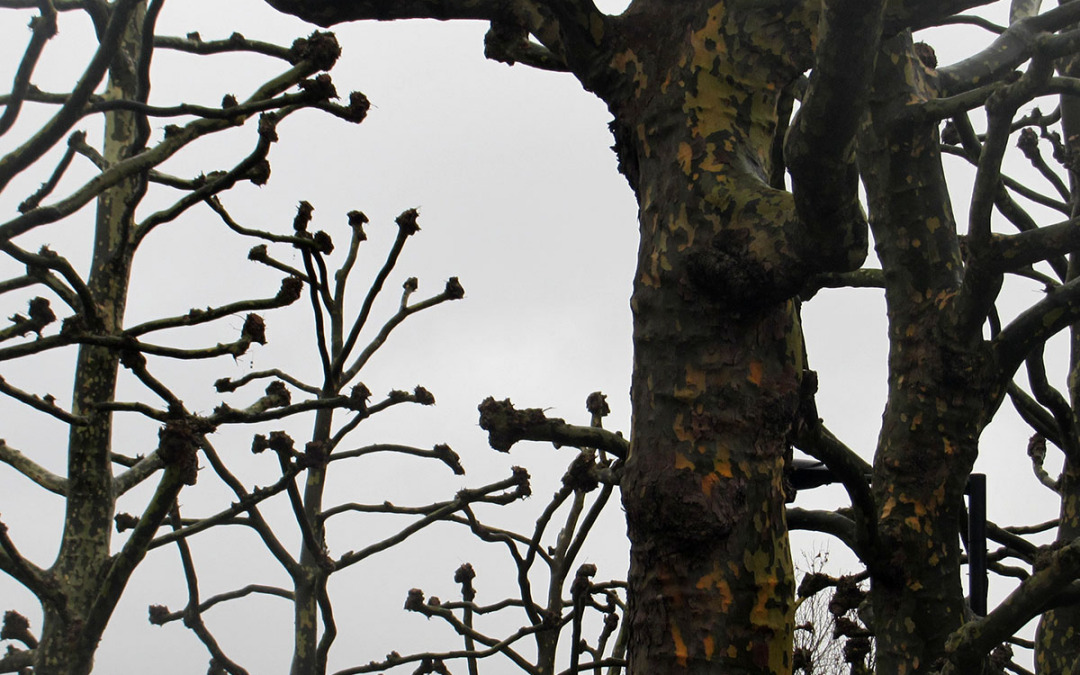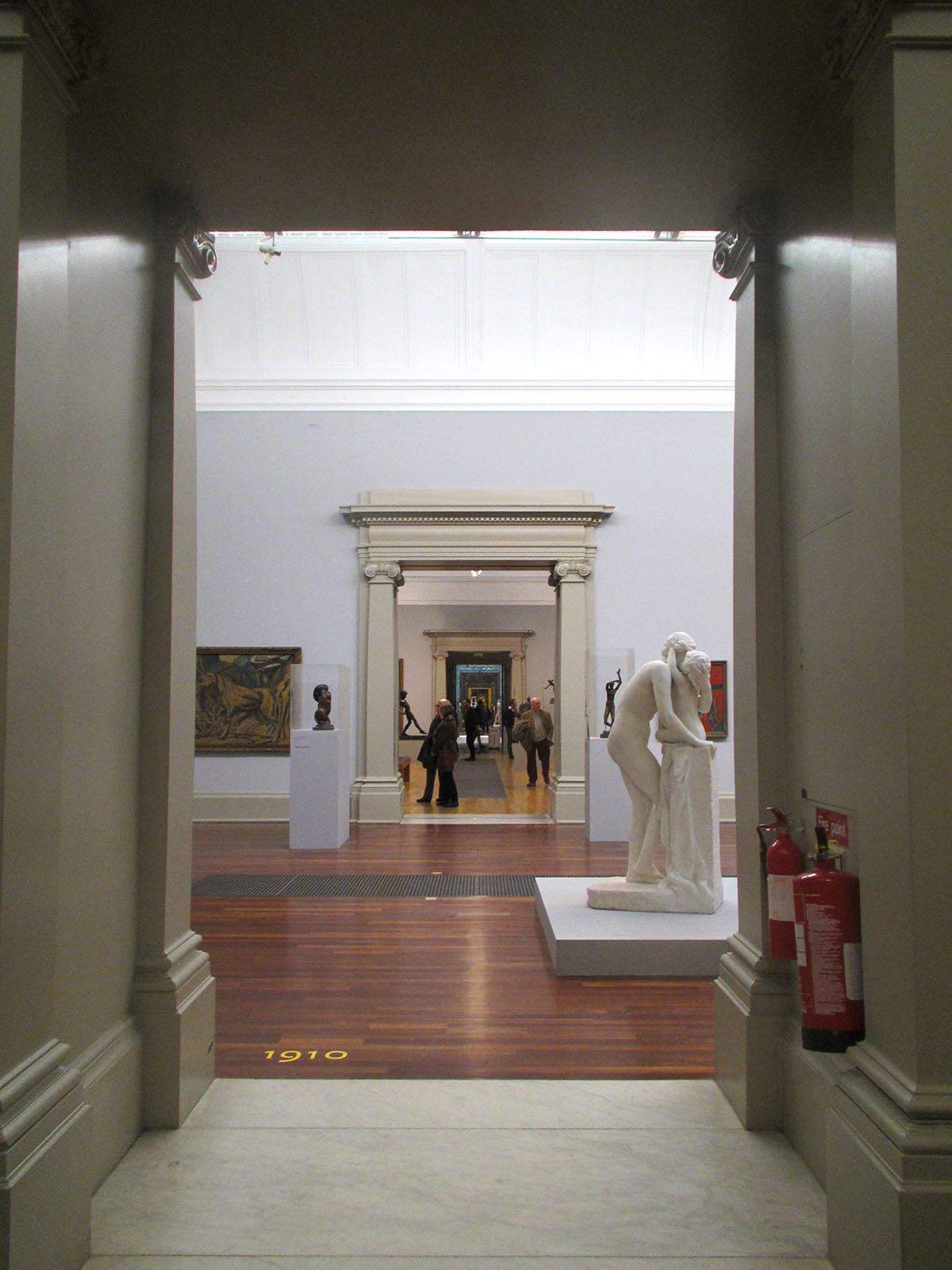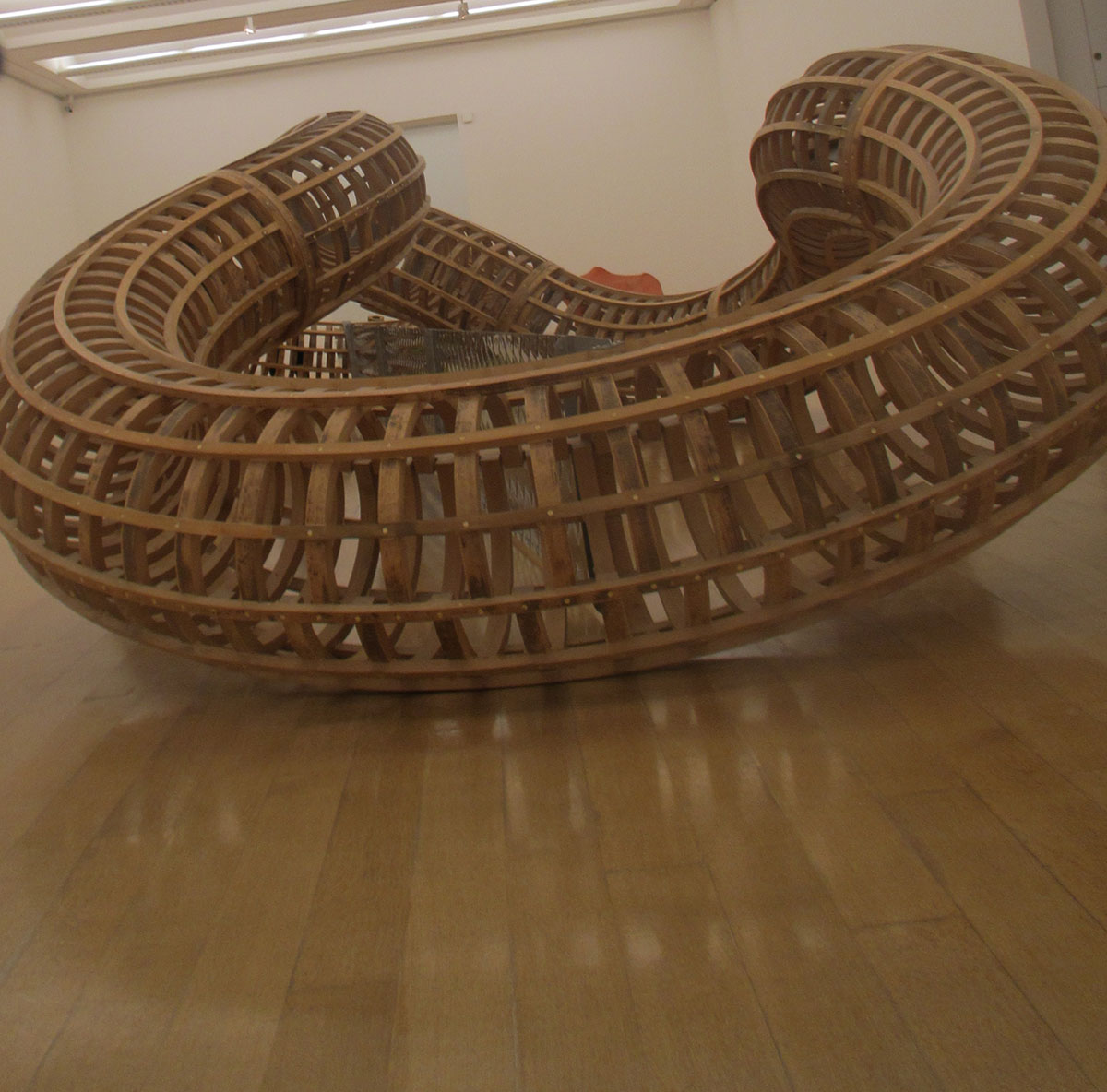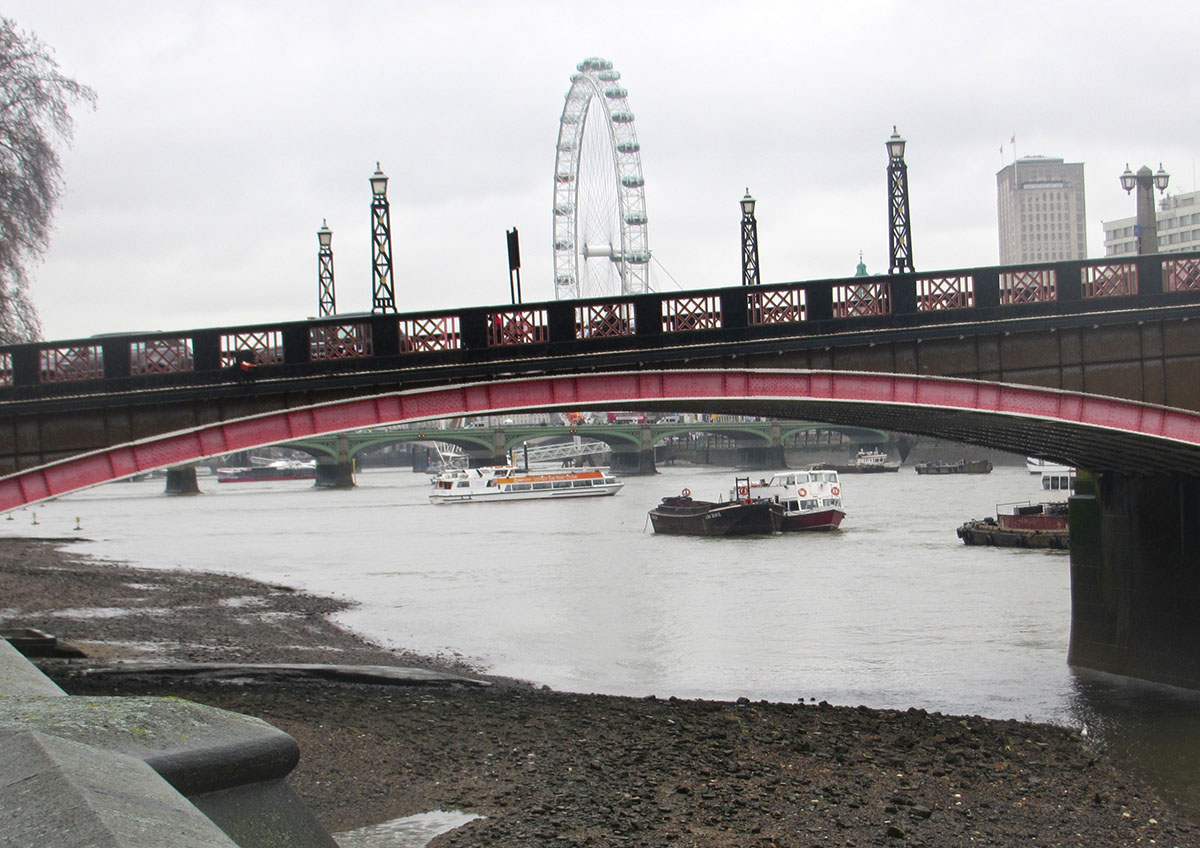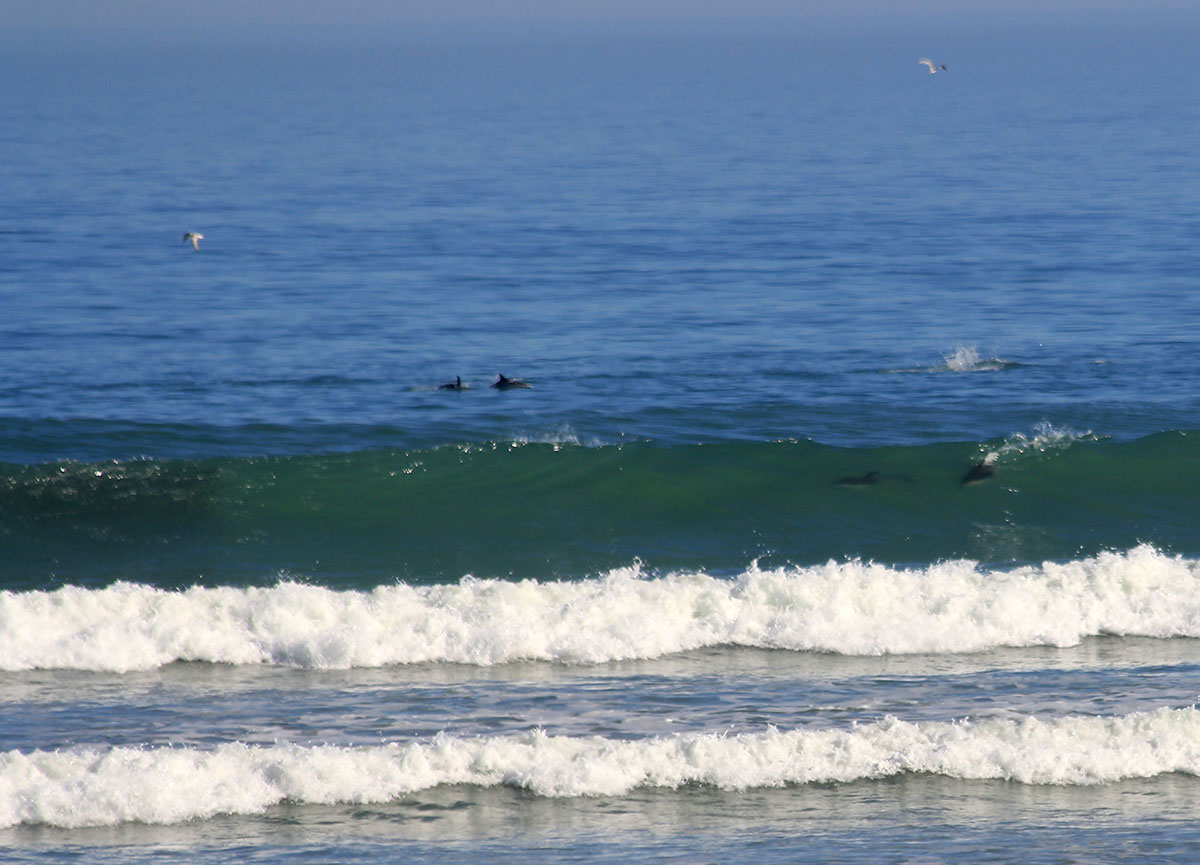Going up to town from Seaford is relatively easy, letting the train take the strain, assuming there arte any running of course. There are Supposedly three direct trains a day though in this rapidly becoming a third world country they rarely appear. If they do the last of these gets in to town at 10.00. As my meeting wasn’t until mid afternoon I thought I would pop into the Tate and get a ‘fix’ of some art to feed my addiction. Not the modern bit, which seems to me to be mainly froth, but the Tate Britain, the original Tate that I first visited in 1967. My train arrives in Victoria, so it is a simple trip to Pimlico tube and a brief walk to the Atterbury Street entrance.
The old military hospital is now Chelsea School of Art its open parade ground area made for sculpture but seemingly used just as a walk through for pedestrians. The line of London plane trees along John Islip street at the back of the Tate gave some striking images, almost monochromatic, but relieved by gleams of the gold and eau de nil colouring of new bark. Their branches drew graphic pictures against the sky, looking like knobkerries where they had been pollarded.
The Tate has followed various foibles of various Keepers through deep green walls etc., but the latest incarnation for the first time respects the original building, and the architect and interior designer have allowed it to speak, holding their egos in check with quite splendid results. This is a lovely building and the subtle paint colours used allow its’ form to sing, whilst the modern alterations don’t hide but are done with great sensitivity yet power. The results are a delight, maybe because arriving at ten I was ahead of the rush, because the building seemed peculiarly empty – but then most tourists these days seem to go to Tate Modern, which has always seemed to me to be a lot of space with little art in it.
Tate Britain has rehung the shows chronologically and the refurbished galleries have brass dates laid into their new floors, each gallery spanning a defined time line , making it easy to find (for example) the art of the sixties . Here is the work of John Hoyland, who I worked for as a studio assistant ‘back in the day’ hung opposite a Richard ‘Dick’ Smith which my fellow student Phil also may have worked on when he in turn was his studio assistant. My main memory of Hoyland was of his bitchy insecurity which led to a constant dribble of scathing put-down comments on his contemporaries which eventually drove me away.
Inside the temporary exhibition space currently was a show by Richard Deacon. Full of joi de vivre, the show put a smile on my face, his skilfully crafted sculptures looking like three-dimensional drawings, the exuberant but calculated handling of materials writhing sinuously through the spaces. A show well worth the visit.
I walked to my meeting along the Thames, delighting in London. A change of landscape, more correctly a brief switch from seascapes to townscapes helping to recharge my enthusiasm, drained by a week of much writing and wrestling with technical problems in the studio. I wait for the weather to improve so I can get out with a sketch book assuming fitness returns fully.

More dramatic tree images on the way home in the dark, on my walk from the station. Branches show how the wind off the sea forms them
In South Africa I used to stay up the West Coast in a cottage that can be rented, in the waters close by with dolphins cavorting, the occasional whale and the house full of the sound of the sea, a sound that has supplanted the noise of London traffic as a background noise for me in Seaford. Unfortunately my illness over the last two years means I stay in Seaford, but the studio intensity will be maintained. shows are lined up and the work is at an exciting stage, which you can follow both on twitter and Facebook

